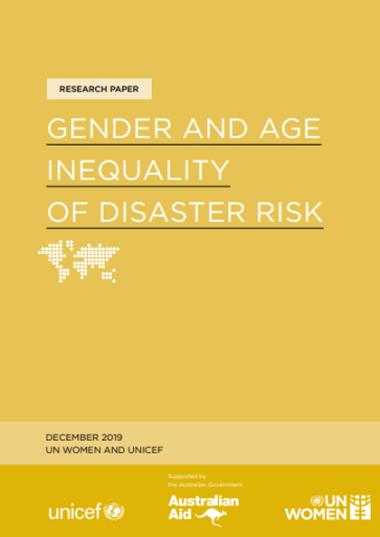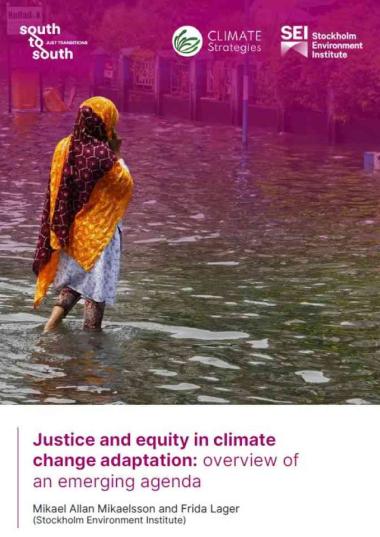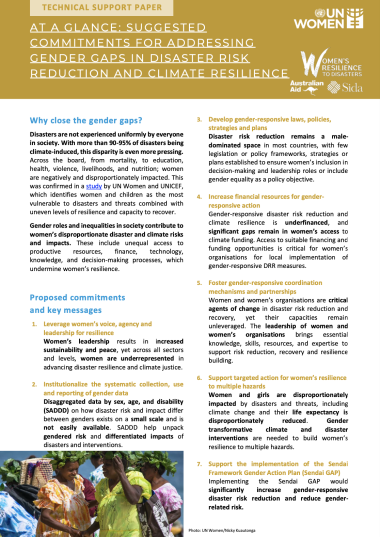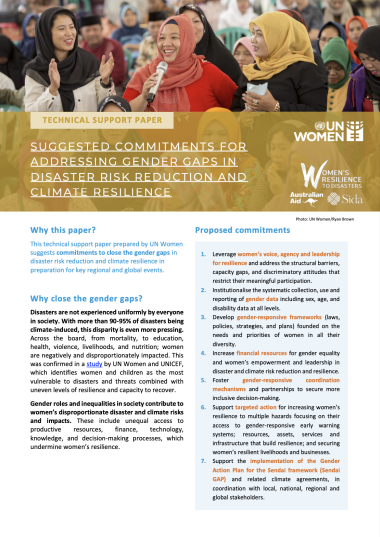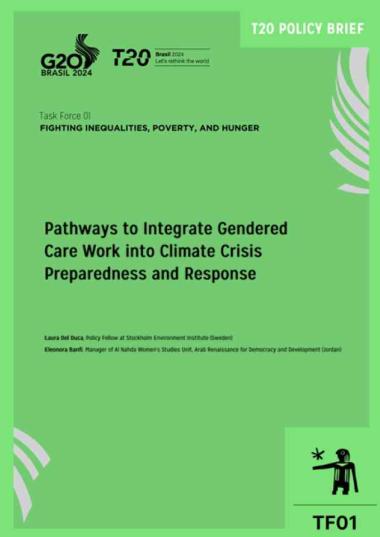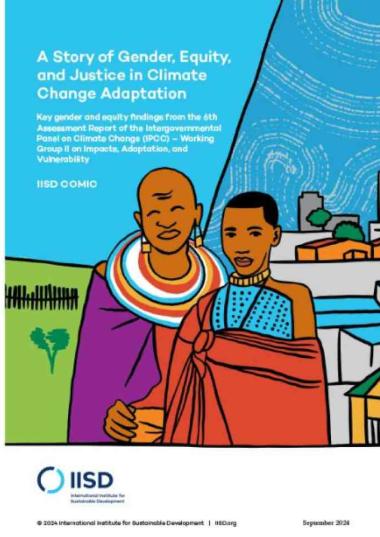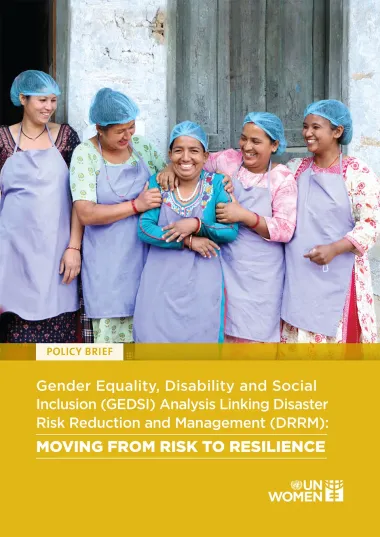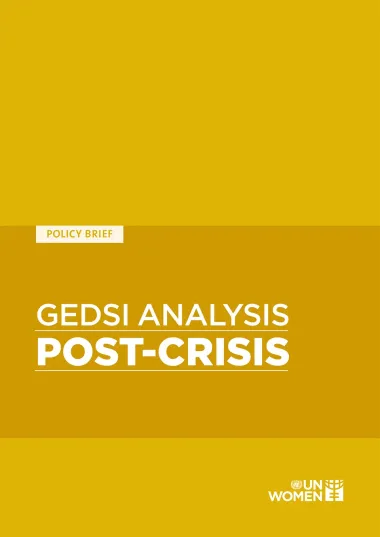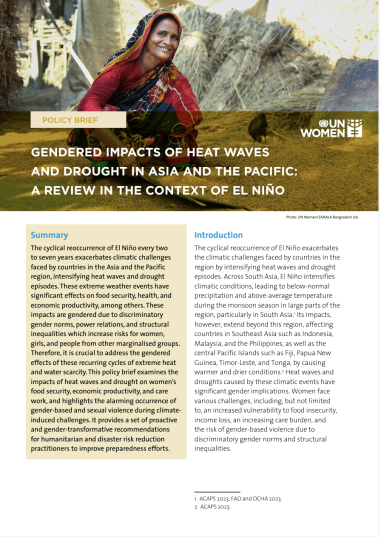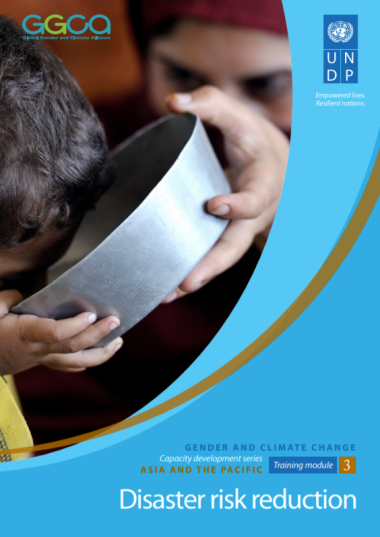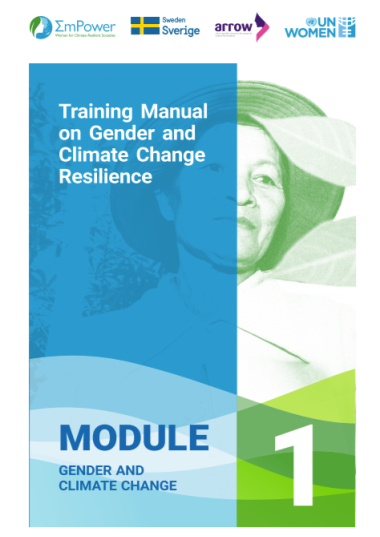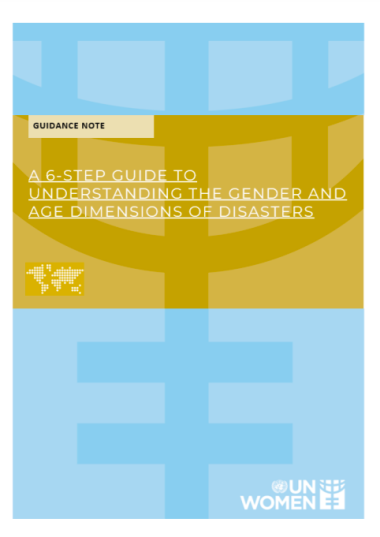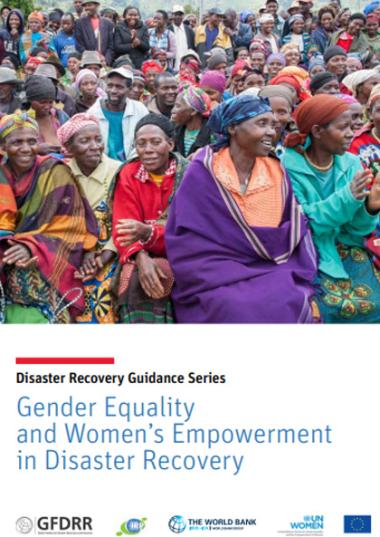
Gender dimensions of disasters
Disasters are not experienced uniformly by everyone in society.
Gender, age, disability, race, sexual orientation, income, geography, and additional socioeconomic factors determine how hazards and threats impact people by shaping vulnerability and exposure. A 2019 study by UN Women and UNICEF confirmed that women, young children, and youth are among the most vulnerable to hazards, conflict, climate change, and other shocks. Across the board, from life expectancy to education, health, violence, livelihoods, and nutrition, women are negatively and disproportionately impacted by disasters and threats as the COVID-19 crisis has clearly demonstrated.
Disasters exacerbate many of the prevailing gender inequalities that exist in society. Heightened disaster vulnerabilities, exposure, risks, and impacts experienced by women are attributed to:
- Discrimination and unequal access to opportunities, natural resources, and other productive resources;
- Unequal access to finance, technology, knowledge, and mobility;
- Socially constructed differences in capacities and capabilities; and
- Discriminatory social, cultural, and legal norms and practices.
There is an increasing amount of anecdotal evidence and data on the unequal impacts of disasters on women and girls. However, concrete sex, age, and disability-disaggregated vulnerability and capacity data, and gender analysis is needed to properly understand differing vulnerabilities and needs, address the gendered dimensions of risk, and support intersectional risk management. The WRD Knowledge Hub helps to close this gap by consolidating research and evidence on gendered differentiated vulnerability to climate and disaster risk and the benefits of gender-responsive disaster risk reduction and resilience.
